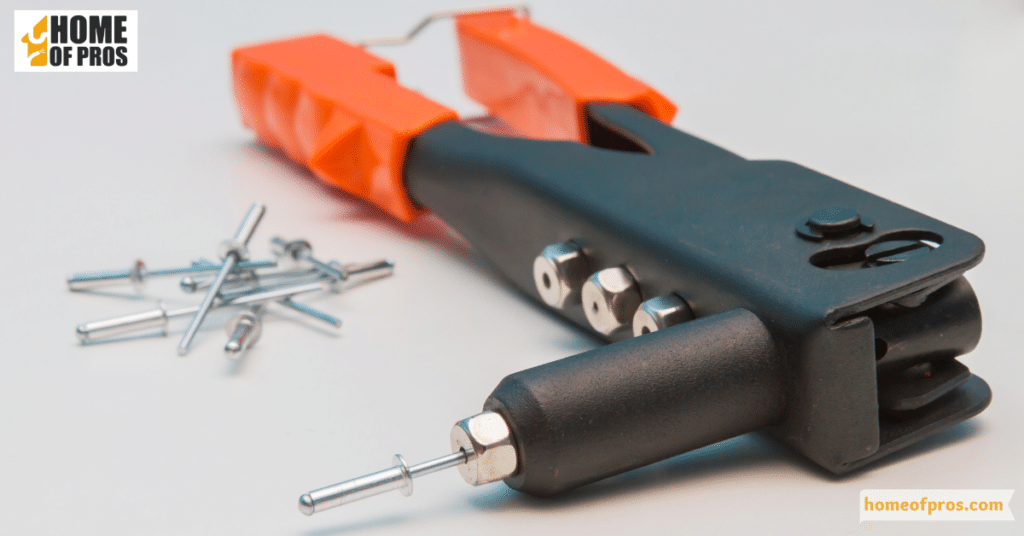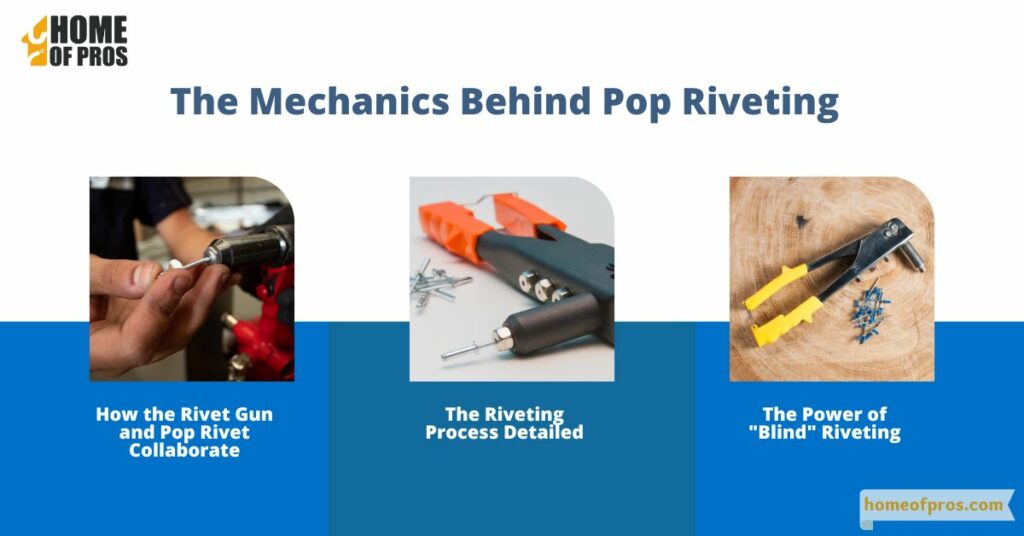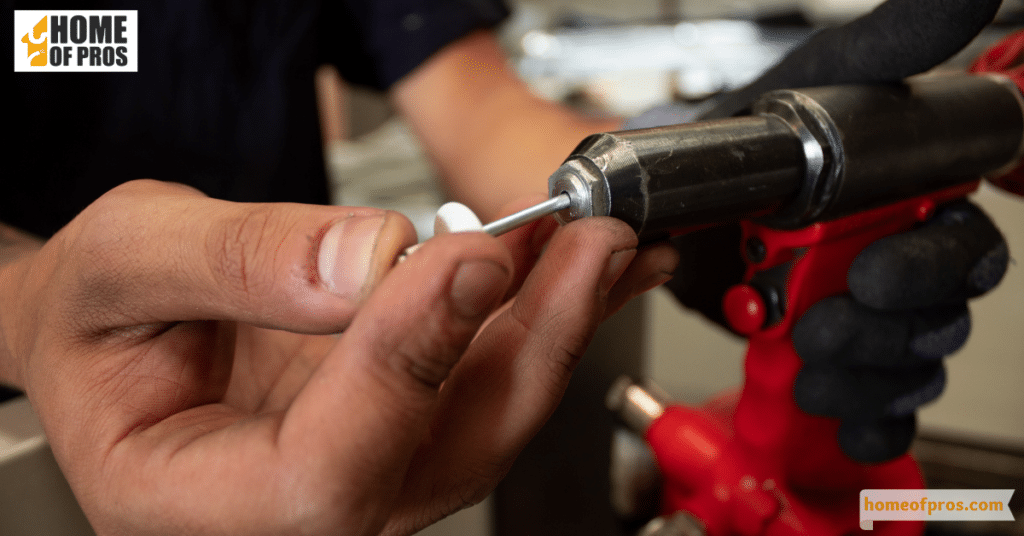A pop rivet, also known as a blind rivet, is a mechanical fastener designed to join thin pieces of metal or plastic together from one side. It consists of a smooth cylindrical shaft with a head at one end, and it is used with a rivet gun, which pulls the shaft back, causing the rivet to expand and grip the material securely. This method ensures a tight, permanent bond, making it invaluable in areas where access is limited to only one side.
In the intricate world of construction and manufacturing, various methods secure materials together, from classic screws to modern adhesives. Yet, among these, pop rivets stand out due to their unique ability to bind effectively, especially in hard-to-reach areas. Join us as we delve into the special world of these exceptional fasteners.

History and Evolution of the Pop Rivet
The story of pop rivets begins during the early 20th century, a time when the need for quick and efficient fastening methods surged, especially in the rapidly growing aerospace industry. These early rivets were initially developed to address the challenges of securing aircraft components, particularly in places where traditional rivets, requiring access to both sides, were impractical. This gave birth to the “blind rivet” or what we commonly refer to as the pop rivet.
Over the decades, the humble pop rivet underwent several transformations. Advancements in materials science provided more durable and lightweight options, expanding their use beyond just the aerospace sector. Innovative design tweaks also made them easier to install and more reliable in their hold. Today, pop rivets stand as a testament to human ingenuity, having evolved from a niche solution for airplanes to a versatile tool found in a multitude of industries, from automotive to home construction.

The Anatomy of a Pop Rivet
Delving into the anatomy of a pop rivet, we uncover the sophisticated engineering that underpins its deceptively simple appearance. Like understanding the parts of a machine, grasping the components of a pop rivet gives insights into its functionality and efficiency.
Key Components of a Pop Rivet:
- Smooth Cylindrical Shaft: Acts as the backbone, providing structural support.
- Head: Sits flush against the surface of the material, ensuring a neat and finished look.
- Tail: The section that expands when the rivet is installed, ensuring a tight grip.
- Mandrel (in some designs): A thin rod that aids in the installation and expansion of the rivet.
Materials in Pop Rivet Manufacturing:
- Aluminum: Lightweight and corrosion-resistant, ideal for general applications.
- Stainless Steel: Offers strength and excellent resistance to rust, used in environments exposed to moisture.
- Copper: Conductive and malleable, sometimes used in electrical applications.
- Monel: Resistant to many chemicals and extreme temperatures, ideal for specialized environments.
The anatomy of a pop rivet, from its individual parts to the materials used, highlights the intricacies of its design. Recognizing these elements brings an appreciation for the thought and expertise that go into every tiny fastener, ensuring reliability and durability in various applications.

The Mechanics Behind Pop Riveting
Pop riveting, a process integral to many industries, combines simplicity with mechanical genius. At the heart of this operation lies the rivet gun and the pop rivet, working in tandem to provide secure fastenings. Let’s dive into the mechanics of this captivating process.

How the Rivet Gun and Pop Rivet Collaborate
- Insertion and Alignment: The pop rivet is inserted into the rivet gun, with the mandrel’s end protruding.
- Activation: Once placed into a pre-drilled hole in the material, the rivet gun is activated.
- Pulling Back the Shaft: The gun exerts force on the mandrel, pulling it into the rivet, which leads to the tail’s expansion.
The Riveting Process Detailed
- Tail Expansion: As the mandrel is pulled, the tail of the rivet starts to expand, creating a bulbous end.
- Formation of the Grip: This expanded end grips the reverse side of the material, ensuring materials are firmly clamped together.
- Completion: Once a firm grip is established, the mandrel reaches a breaking point and snaps off, leaving the rivet securely in place.
The Power of “Blind” Riveting
- One-Sided Access: Blind rivets can be installed when access is only available from one side, making them invaluable in tight spaces or sealed environments.
- Versatility: This method opens up opportunities for numerous applications, from aerospace to home repairs, where traditional rivets might not be feasible.
- Efficiency: Blind riveting speeds up the fastening process, reduces labor efforts, and ensures a consistent and reliable bond.
The mechanics of pop riveting reveal a harmony between tool and fastener, achieving results that are both durable and elegant. With the innovation of “blind” riveting, even the most challenging scenarios find a solution, underscoring the timeless value of this mechanical marvel.
Applications and Benefits
Pop rivets, while small in stature, play a monumental role across various industries. Their unique design and capabilities provide solutions where traditional fastening methods might falter. Let’s examine the industries they serve and the unmatched benefits they offer.
| Industries/Applications | Benefits of Using Pop Rivets |
|---|---|
| Aerospace | • Superior strength and lightweight properties suitable for aircraft components. • Effective in limited access areas of plane structures. |
| Automotive | • Durability ensures long-lasting joins, even under vibration. • Efficient assembly for production lines. |
| Home Construction | • Suitable for connecting thin materials like aluminum or plastic sidings. • Offers a clean finish without external fastening marks. |
| Shipbuilding | • Resistance to corrosion in saltwater environments. • Ensures tight seals, critical for water vessels. |
| Electronics | • Small size ideal for compact components. • Conductive materials available for electrical applications. |
Benefits Overview:
- Accessibility: One of the significant advantages is the ability to fasten from one side, essential for tight or hard-to-reach spaces.
- Durability: Once set, pop rivets offer a permanent and robust bond, resistant to vibrations and wear.
- Versatility: Their wide range of sizes, materials, and designs make them adaptable to various applications.
From soaring planes to the gadgets in our hands, the presence of pop rivets is pervasive and influential. Their blend of adaptability and strength makes them an indispensable tool, ensuring structures and products remain intact and efficient.
How to Properly Use a Pop Rivet
While pop rivets offer exceptional utility across numerous applications, their efficacy hinges on the correct usage. Properly setting a rivet not only ensures the desired bond strength but also maintains safety during the process. Let’s explore a step-by-step guide on how to adeptly use a pop rivet.
- Preparation: Ensure that the materials to be joined have pre-drilled holes aligned perfectly. The hole diameter should correspond with the size of the rivet.
- Choose the Correct Rivet: Based on material thickness and type, select the appropriate rivet size and material.
- Load the Rivet: Insert the rivet’s mandrel into the rivet gun’s nosepiece until the rivet’s head is flush with the nosepiece.
- Position the Rivet: Place the rivet’s head into the pre-drilled hole, ensuring it sits flush against the material.
- Activate the Rivet Gun: Squeeze the rivet gun’s handles together. This action pulls the mandrel, causing the rivet to expand and grip the material.
- Ensure a Tight Bond: Continue squeezing until the mandrel snaps off, indicating a secure bond. The rivet should be flush or slightly below the surface of the material.
- Inspect: After the mandrel breaks off, inspect the rivet to ensure it’s set correctly and holds the materials firmly.
Best Practices for Effective and Safe Riveting:
- Wear Safety Gear: Always use safety glasses to protect your eyes from flying mandrel tips or other debris.
- Regular Maintenance: Periodically inspect and clean your rivet gun to ensure optimal performance and longevity.
- Choose Quality Rivets: Not all rivets are created equal. Opt for high-quality rivets to ensure the strongest bonds.
- Avoid Over-squeezing: Applying too much force can damage the rivet or the material. Stop once the mandrel breaks off.
- Test First: Especially when working with new materials or rivets, do a test joint to ensure compatibility and strength.
Mastering the art of pop riveting can be both satisfying and beneficial, ensuring projects have lasting durability. By adhering to the steps and best practices outlined, users can achieve the full potential of these remarkable fasteners while maintaining safety.

conclusion
In essence, the key to a lasting and robust deck lies in tapping into expert knowledge, choosing quality over compromise, and adopting a proactive maintenance approach. By embracing these principles, homeowners can ensure their decks remain not only structurally sound but also aesthetically pleasing for years to come.











